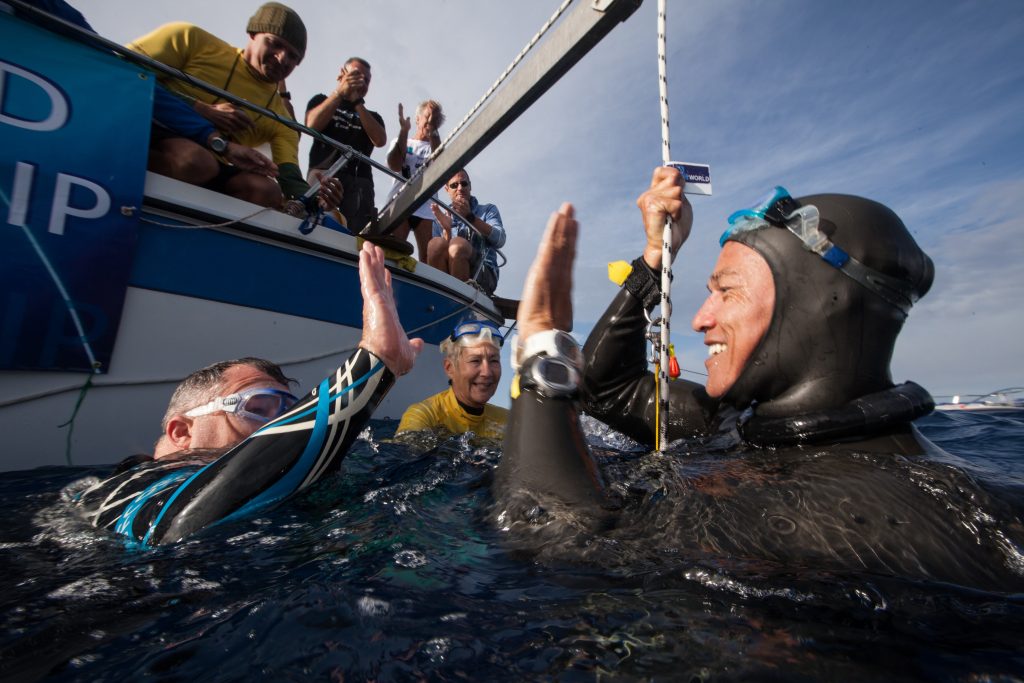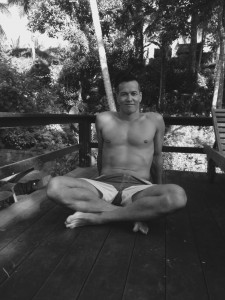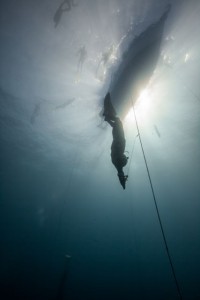How to dive to 100 meters year after year? 4 tips to return to your personal best!

By Michael Board – Competitive Freediver (103m CWT) and multiple British record holder
Underwater Photos by Daan Verhoeven
Many Freedivers are returning to depth now after months out of the water – me too, so I thought I would write this to share some ideas from my own experience over the past three years. It has been helpful to think about what mistakes I have made in previous years which held me back.
After first reaching 100m in depth in 2012 I thought it would be relatively easy to get back down there the following year. I mean I knew that I would have to get dive fit again, train apnea, get strong and be flexible, but the actual path should be relatively easy because I have been there before – right! Well, not entirely. Actually, I have found that getting back down to 100m has been challenging in both 2013 and again in 2014 before the Team World Championships and Vertical Blue. So here are some things to think about if you are also returning to depth this year!
- Remember all the ‘little things’ that you did before to get down to depth!
Do not forget the mental tools that you used before to get past obstacles you previously came up against in a deep dive. The best way to repeat your successful performances is to do exactly what you did before. However it’s easy to forget the small mental tools that you used the year before, the mental programs you ran that settled your mind before a dive, the thoughts that you used to stay relaxed on the breathe-up or during the long free-fall. This is where keeping a detailed dive journal is essential. Record every deep dive in detail, not just what you did in terms of technique but also what you thought and what mental tools you used during different stages of the dive. - It is important to get your weighting right!
It seems so obvious really. However year after year I waste time doing dives that don’t feel good because I am diving too light, or sometimes too heavy. Each year I try to dive lighter so that the ascent is easier and there’s less risk of hypoxia. This is obviously a good practice if your descent is still relaxed and effortless. However what I have found many times was that I was struggling to get back down to my previous bests, losing relaxation and then losing my mouth-fill and turning early on dives. I did not realize on these occasions that I had taken too much weight off (out of my neck-weight) and had made the descents uncomfortable by doing this. This obviously increased the work rate and decreased the speed of the free-fall and increased the time of the free-fall phase. I realized that adding an extra hundred grams could make all the difference and transform the dive. Also, adjusting your buoyancy according to the salinity of the water where you are diving is important. I have noticed that year after year I need to add weight when diving in the Mediterranean compared to here in Gili Trawangan. Notice the subtle differences early, make adjustments early and save on wasted dive sessions! - Dive in the same equipment combination in training as you intend to dive in competition.
I spend most of my year diving in the tropics in Indonesia with water temperatures of 27-30 degrees and very little thermocline. The most comfortable wetsuit to dive in here is a 1.5mm suit. In the past, I would spend most of my year training in a 1.5mm wetsuit, and then I would travel to the Mediterranean and dive in a 3mm, and wonder why I was finding it difficult to do the same dives. No surprise really as everything had changed. The buoyancy changes at depth are different with more neoprene compression and the weight required is different, both effecting free-fall speed etc. So now I try and train in the same wetsuit combination all year around. Deep dives become more comfortable and easier when we repeat the same pattern over and over again. Given that we do not have the opportunity to do that many deep dives anyway it is important to minimize any differences from dive to dive so that the same patterns are programmed. - Be technical with your dives.
I teach this as a key deep diving skill to all advanced freedivers at Freedive Gili. Plan your dive exactly and dive your plan exactly! Your plan can start from any point, maybe as early as when you enter the water, but mine normally starts from when I clip my lanyard on the dive line. At this point you start to follow your mental program that you have rehearsed and dived so many times before. You may have a certain visualization or thought process that keeps you calm and distracted in the final minutes before your dive, you should know exactly when you will take your final breath, maybe at OT (Official Top), maybe OT minus 10 seconds, exactly how many packs you will take, how many kicks or strokes it takes to reach 20 meters, when you will hear your first depth alarm telling you when to take your mouth-fill, how many seconds before you top-up your mouth-fill and go in to free-fall, what to focus on during the freefall – arm position, relaxing the chest, neck and head, what to visualize to focus the mind etc. None of these things change from dive to dive, or at least it shouldn’t do! The more times you dive your plan successfully the easier it will be to repeat it, even under competition conditions.
Michael Board is Britain’s deepest diver in Free Immersion and Constant Weight and the founder of Freedive Gili on Gili Trawangan, Indonesia.



